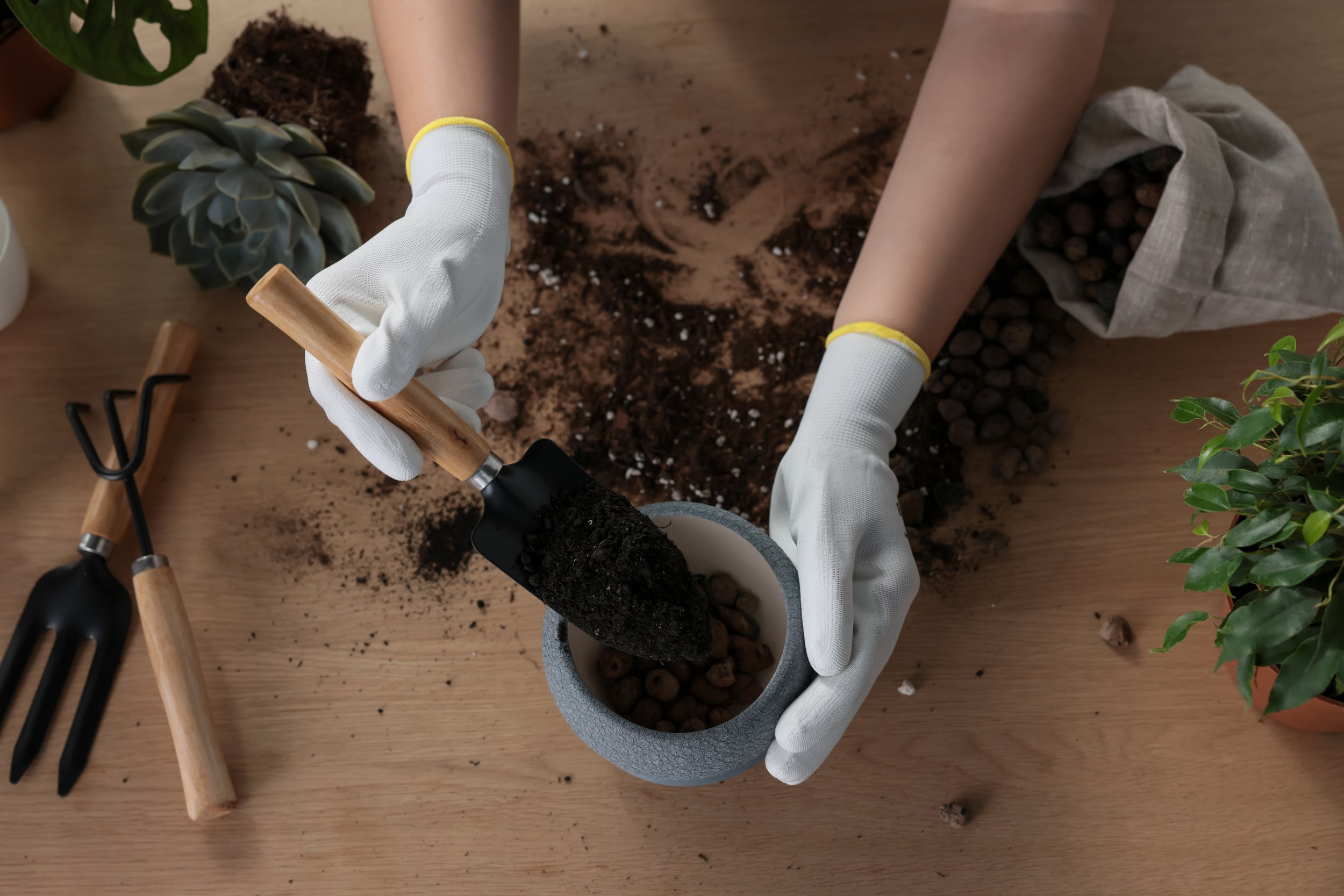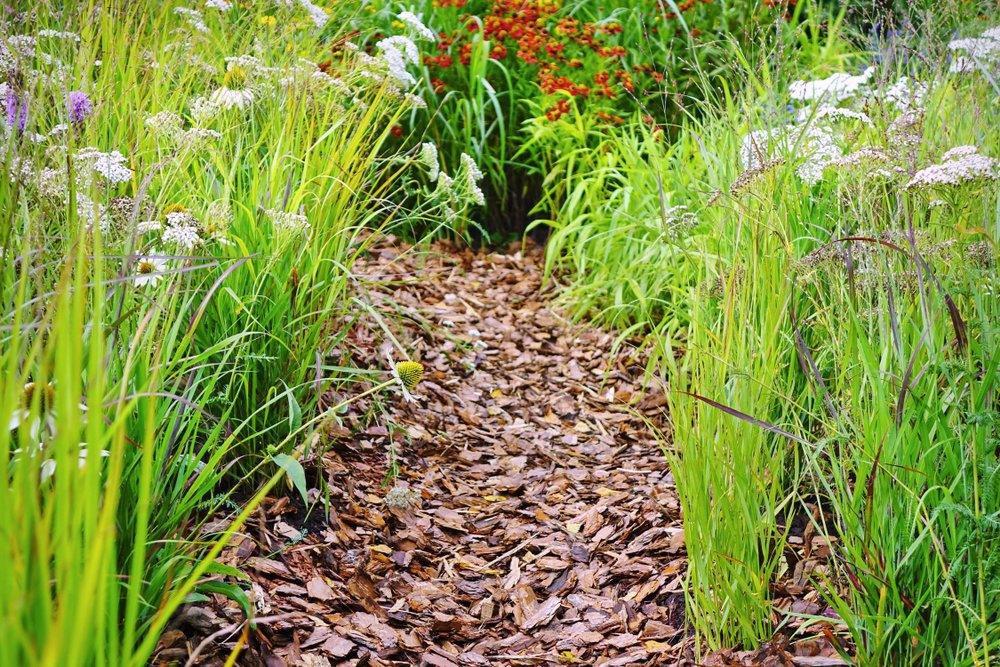Three Popular Garden Myths Busted
I can be a sucker for wives’ tales and other garden advice passed along, until the moment I find myself measuring Epsom salts while planting grape vines. That's when I start to wonder the legitimacy of most gardening advice. I started pulling lists from experts, scientists, and longtime gardeners on the most misunderstood garden advice. Save yourself time and energy and forget those methods your neighbor’s friend’s cousins swears by and let me help you…
Shrader Stone Fall containers 2021. Amber Mae Photography
1. Myth: Put gravel or rocks in the bottom of containers to improve drainage.
It makes sense that water would pass through gravel more easily than soil alone. Right? Not exactly. Water resists moving between different mediums and different size materials, this can be explained with some complicated science explanation that we won’t go into. All you really need to know is that water ends up pooling between the soil and the gravel. This keeps the plants roots soaked, which aside from forgetting to water, is the quickest way to kill a plant. If you want a visual….watch Joe Gardener demonstrate this on youtube.
Do Instead: Since we often rely on long-blooming plants in containers, this is one area it’s worth investing in a nice potting soil in your containers. You can buy ready-made or make your own with potting mix, topsoil, and vermiculite. Fill the containers to the bottom with soil.
2. Myth: Till the Beds Every Year!
Great news—put that heavy tiller back in the shed. That “beautiful,” soft, fine soil seems just right. Unfortunately, it’s NOT. Tilling introduces oxygen to the soil, which creates a flurry of activity as microbes consume the newly created organic matter. Once those microbes exhaust the burst of growth, they die, and leave the soil poorer than before.
In addition, soil contains air and water pockets, and plants rely on these to grow and take root. Tilling destroys these pockets and damages the soil structure, which increases runoff and erosion.
Do Instead: Improve your soil with compost and mulches—2” of compost in a vegetable bed and 1” of compost around plants every spring is all the feeding they need. Better yet, use native plants that have evolved to grow in native soils. (Have a difficult site? We’ve got recommendations. Our Plant Combinations for Difficult Sites post goes live Aug 19th.)
3. Myth: Mix Wood Chips Into Clay Soil
This one is quite controversial! (I know, drama in the gardening world. Didn’t expect that, did you?) Many gardeners swear by mixing wood chips into soil to build nutrients and break up clay. Just as tilling the soil, wood chips provide so much carbon that a flurry of microorganisms quickly reproduce, devour nutrients, die off, and leave a deficit.
Do Instead: Mulching with wood chips on top of the soil doesn’t create the carbon boom, but instead slowly feeds the plant. Top dressing allows microorganisms to slowly break down the wood chips and incorporate carbon over time. Nature fertilizes with leaves from the top every year, and we follow suit.




